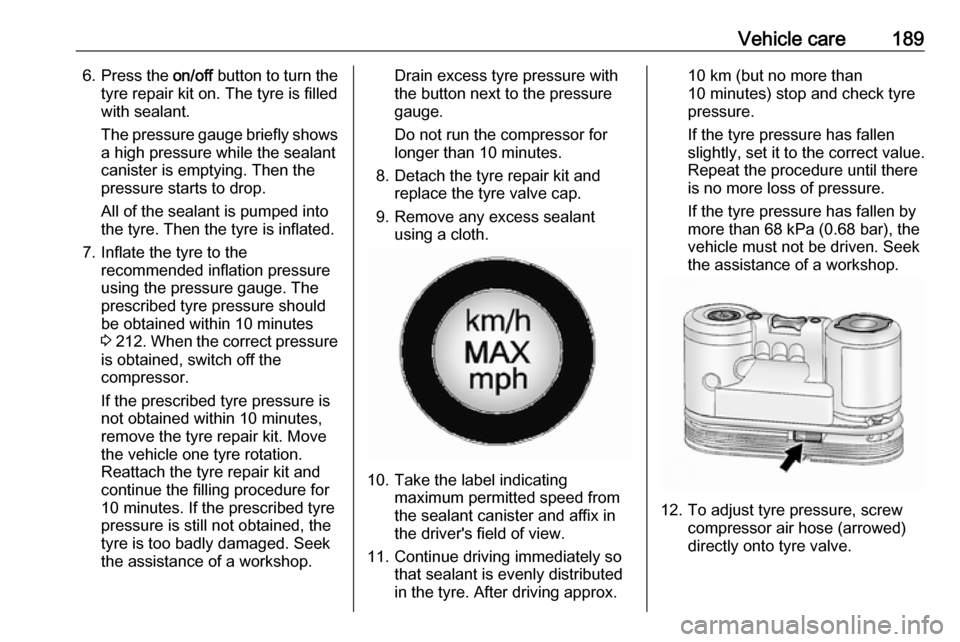light OPEL ANTARA 2017.5 Manual user
[x] Cancel search | Manufacturer: OPEL, Model Year: 2017.5, Model line: ANTARA, Model: OPEL ANTARA 2017.5Pages: 225, PDF Size: 6.2 MB
Page 180 of 225

178Vehicle careFuseCircuitAPO JACK
(CONSOLE)Power outlet
(centre
console)APO JACK (REAR
CARGO)Power outlet
(load compart‐
ment)AUDIO/KEY
CAPTUREAudio, key
captureAWD/VENTAll-wheel drive,
ventilationBCM (CTSY)Courtesy lightsBCM (DIMMER)Instrument illu‐
minationBCM (INT LIGHT
TRLR FOG)Interior lights,
trailer fog lightBCM (PRK/TRN)Parking lights,
turn signalsBCM (STOP)Brake lightsBCM (TRN SIG)Turn signalsBCM (VBATT)Battery voltageFuseCircuitCLSTRInstrument
clusterDC/DC
CONVERTERDC, DC
converterDRLDaytime
running lightsDR/LCKDriver door lockDRVR PWR SEATDriver power
seatDRV/PWR WNDWDriver power
windowERAGLONASSEmergency
road assistance
GlonassF/DOOR LOCKFuel filler flapFRT WSRFront washerFSCMFuel systemFSCM/VENT SOLFuel system,
vent solenoidHEATING MAT
SWHeating mat
switchFuseCircuitHTD SEAT PWRSeat heatingHVAC BLWRClimate control,
air conditioning
fanIPCInstrument
panel clusterISRVM/RCMInterior mirror,
remote
compass
moduleL/GATETailgateLOGISTIC MODELogistic modeOSRVMExterior mirrorsPAKSPassive active
keyless startPASS PWR
WNDWPassenger
power windowPWR DIODEPower diodePWR MODINGPower modingRR FOGHeated rear
window
Page 186 of 225

184Vehicle careTyre pressures in Info-Display
The current tyre pressures can be
shown in the menu item Tyres in the
Board Computer menu. Press BC on
the Infotainment system and select
the menu item.
The tyre pressure monitoring system
automatically detects the vehicle
load. A corresponding message may appear on the Info-Display if
inconsistent tyre pressures are
detected. In some versions, the
message is displayed in abbreviated
form.
For example, the following messages can be displayed:
A graphic indicating the left rear tyre
is shown together with the current tyre
pressure; slight pressure deviation.
Reduce speed. Check tyre pressure
at next opportunity with an
appropriate gauge and correct if
necessary.
On the Colour-Info-Display, this
message will appear in yellow.A graphic indicating the front left tyre
is shown together with the current tyre
pressure; significant pressure
deviation or direct pressure loss.
Steer out of the flow of traffic as
quickly as possible without
endangering other vehicles. Stop and
check the tyres. Mount the spare
wheel if necessary 3 190.
On the Colour-Info-Display, this
message will appear in red.
Acknowledgement of warnings 3 92,
3 94.
Vehicle messages 3 99.
Page 191 of 225

Vehicle care1896. Press the on/off button to turn the
tyre repair kit on. The tyre is filled
with sealant.
The pressure gauge briefly shows a high pressure while the sealant
canister is emptying. Then the
pressure starts to drop.
All of the sealant is pumped into
the tyre. Then the tyre is inflated.
7. Inflate the tyre to the recommended inflation pressure
using the pressure gauge. The
prescribed tyre pressure should
be obtained within 10 minutes
3 212 . When the correct pressure
is obtained, switch off the
compressor.
If the prescribed tyre pressure is
not obtained within 10 minutes,
remove the tyre repair kit. Move
the vehicle one tyre rotation.
Reattach the tyre repair kit and
continue the filling procedure for
10 minutes. If the prescribed tyre
pressure is still not obtained, the
tyre is too badly damaged. Seek
the assistance of a workshop.Drain excess tyre pressure with
the button next to the pressure
gauge.
Do not run the compressor for
longer than 10 minutes.
8. Detach the tyre repair kit and replace the tyre valve cap.
9. Remove any excess sealant using a cloth.
10. Take the label indicating maximum permitted speed from
the sealant canister and affix in
the driver's field of view.
11. Continue driving immediately so that sealant is evenly distributedin the tyre. After driving approx.
10 km (but no more than
10 minutes) stop and check tyre
pressure.
If the tyre pressure has fallen
slightly, set it to the correct value.
Repeat the procedure until there
is no more loss of pressure.
If the tyre pressure has fallen by more than 68 kPa (0.68 bar), the
vehicle must not be driven. Seek
the assistance of a workshop.
12. To adjust tyre pressure, screw compressor air hose (arrowed)
directly onto tyre valve.
Page 194 of 225

192Vehicle careIf this is not the case, carefully
lower the vehicle immediately and
reposition the jack. Raise the
vehicle until the wheel is just clear of the ground.
6. Unscrew wheel nuts completely and wipe clean with a cloth.
Do not grease the threads. Put
wheel nuts somewhere where the threads will not be soiled.
7. Change the wheel. Notes on spare wheel 3 193.
8. Screw on the wheel nuts and tighten slightly by hand by turningclockwise until wheel is held
against the hub.
9. Rotate wrench anticlockwise and lower vehicle to the ground.
10. Install the wheel wrench ensuring that it locates securely and tighten
each wheel nut in a crosswise
sequence. Tightening torque is
140 Nm.
11. Stow the replaced wheel 3 193
and the vehicle tools 3 179.
12. Check the tyre pressure of the installed tyre as soon as possible.
Have the defective tyre renewed and
replace temporary spare wheel with a full specification wheel without delay.
Jacking position for lifting platform
Rear arm position of the lifting
platform centrically under the recess
of the sill.
Page 197 of 225

Vehicle care195●A discharged battery can already
freeze at a temperature of 0 °C.
Defrost the frozen battery before
connecting jump leads.
● Wear eye protection and protective clothing when
handling a battery.
● Use a booster battery with the same voltage (12 Volts). Its
capacity (Ah) must not be much less than that of the discharged
battery.
● Use jump leads with insulated terminals and a cross section of
at least 16 mm 2
(25 mm 2
for
diesel engines).
● Do not disconnect the discharged
battery from the vehicle.
● Switch off all unnecessary electrical consumers. The
Infotainment system may be
damaged if switched on while jump starting.
● Do not lean over the battery during jump starting.
● Do not allow the terminals of one
lead to touch those of the other
lead.● The vehicles must not come into contact with each other during
the jump starting process.
● Apply the electrical parking brake
3 143, transmission in neutral,
automatic transmission in P.
● Open the positive terminal protection caps of both batteries.
Lead connection order:
1. Connect the red lead to the positive terminal 1 of the booster
battery.
2. Connect the other end of the red lead to the positive terminal 2 of
the discharged battery.
3. Connect the black lead to the negative terminal 3 of the booster
battery.
4. Connect the other end of the black
lead to a vehicle grounding point,
such as the engine block 4 or an
engine mounting bolt. Connect as far away from the discharged
battery as possible, however at
least 60 cm.
Route the leads so that they cannot
catch on rotating parts in the engine
compartment.
To start the engine: 1. Start the engine of the vehicle providing the jump start.
2. After 5 minutes, start the other engine. Start attempts should be
made for no longer than
15 seconds at an interval of
1 minute.
3. Allow both engines to idle for approx. 3 minutes with the leads
connected.
4. Switch on electrical consumers (e.g. headlights, heated rear
window) of the vehicle receiving
the jump start.
Page 198 of 225

196Vehicle care5. Operate discharged vehicle forapprox. 20 minutes to allow for
adequate battery recharging.
6. Reverse above sequence exactly when removing leads.Towing
Towing the vehicle
Remove the spoiler lip from the front
left-hand side of the vehicle by
unfastening the six screws located on the underside of the vehicle. Then
attach the towing eye.
The towing eye is stowed with the
vehicle tools 3 179.
Screw in the towing eye as far as it will
go until it stops in a horizontal
position.
Attach a tow rope - or better still a tow
rod - to the front towing eye, never to
the bumper or front suspension units.
Do not tow the vehicle from the rear.
The front towing eye must only be
used for towing and not recovering a
vehicle.
Switch on ignition to release steering wheel lock and to permit operation of
brake lights, horn and windscreen
wiper.
Transmission in neutral.
Page 200 of 225

198Vehicle careAppearance careExterior care
Locks The locks are lubricated at the factoryusing a high quality lock cylinder
grease. Use de-icing agent only when
absolutely necessary, as this has a
degreasing effect and impairs lock function. After using a de-icing agent, have the locks regreased by a
workshop.
Washing The paintwork of your vehicle is
exposed to environmental influences. Wash and wax your vehicle regularly.
When using automatic car washes,
select a programme that includes
waxing.
Bird droppings, dead insects, resin,
pollen and the like should be cleaned
off immediately, as they contain
aggressive constituents which can
cause paint damage.If using a car wash, comply with the
car wash manufacturer's instructions.
The windscreen wiper and rear
window wiper must be switched off.
Remove antenna and external
accessories such as roof racks etc.
If you wash your vehicle by hand,
make sure that the insides of the
wheel housings are also thoroughly
rinsed out.
Clean edges and folds on opened
doors and the bonnet as well as the
areas they cover.Caution
Always use a cleaning agent with
a pH value of 4 to 9.
Do not use cleaning agents on hot surfaces.
Have the door hinges of all doors
greased by a workshop.
Do not clean the engine compartment with a steam-jet or high-pressure jet
cleaner.
When cleaning with a high-pressure
jet cleaner, ensure a minimum
distance of 30 cm when working
around the tailgate to prevent
unintended unlocking.
Thoroughly rinse and leather-off the
vehicle. Rinse leather frequently. Use
separate leathers for painted and
glass surfaces: remnants of wax on
the windows will impair vision.
Do not use hard objects to remove
spots of tar. Use tar removal spray on
painted surfaces.
Exterior lights
Headlight and other light covers are
made of plastic. Do not use any
abrasive or caustic agents, do not use an ice scraper, and do not clean them
dry.
Polishing and waxing
Wax the vehicle regularly (at the
latest when water no longer beads).
Otherwise, the paintwork will dry out.
Polishing is necessary only if the paint
has become dull or if solid deposits
have become attached to it.
Page 202 of 225

200Vehicle careInterior careInterior and upholstery
Only clean the vehicle interior,
including the instrument panel fascia
and panelling, with a dry cloth or
interior cleaner.
Clean the leather upholstery with
clear water and a soft cloth. In case of
heavy soiling, use leather care.
The instrument cluster and the
displays should only be cleaned using a soft damp cloth. If necessary use aweak soap solution.
Clean fabric upholstery with a
vacuum cleaner and brush. Remove
stains with an upholstery cleaner.
Clothing fabrics may not be
colourfast. This could cause visible
discolourations, especially on light-
coloured upholstery. Removable
stains and discolourations should be
cleaned as soon as possible.
Clean seat belts with lukewarm water or interior cleaner.Caution
Close Velcro fasteners as open
Velcro fasteners on clothing could damage seat upholstery.
The same applies to clothing with
sharp-edged objects, like zips or
belts or studded jeans.
Plastic and rubber parts
Plastic and rubber parts can be
cleaned with the same cleaner as
used to clean the body. Use interior cleaner if necessary. Do not use any
other agent. Avoid solvents and petrol in particular. Do not use high-
pressure jet cleaners.
Page 220 of 225

218IndexAAccessories and vehicle modifications .......................... 157
Accessory sockets ........................77
Active head restraints .............35, 36
AdBlue .................................. 88, 131
Adjustable air vents ...................119
Airbag and belt tensioners ...........83
Airbag deactivation ................50, 83
Airbag label................................... 45 Airbag system .............................. 45
Air conditioning regular operation ................................ 121
Air conditioning system .............. 115
Air intake .................................... 120
Air vents...................................... 119
All wheel drive .....................86, 140
Antilock brake system ................ 142
Antilock brake system (ABS) .......85
Anti-theft alarm system ..........26, 91
Anti-theft locking system .............. 25
Appearance care ........................198
Apply footbrake ............................ 90
Armrest ................................... 39, 41
Armrest storage ........................... 58
Automatic anti-dazzle ..................30
Automatic dimming ......................30
Automatic headlight levelling system ...................................... 90
Automatic level control .......106, 147Automatic light control ...............106
Automatic transmission ........84, 136
Autostop ..................................... 126
AUX input ..................................... 58
B Battery .......................................... 84
Battery discharge protection ......113
Battery, jump starting.................. 194
Belt pretensioners......................... 41
Belts.............................................. 41 Bicycle rack .................................. 58
BlueInjection ............................... 131
Board-Info-Display .......................92
Bonnet ....................................... 158
Brake and clutch fluid .................202
Brake assist ............................... 144
Brake fluid .................................. 162
Brakes ............................... 142, 161
Brake system ............................... 85
Breakdown.................................. 196
Bulb replacement ....................... 165
C
Capacities .................................. 211
Card holder ................................... 56
Car Pass ...................................... 21
Catalytic converter ................84, 130
CD tray ......................................... 56
Central locking system ................22
Centre console storage ...............58
Page 221 of 225

219Centre high-mounted brakelight.................................. 109, 170
Change engine oil .......................89
Changing tyre and wheel size ...186
Charging system .......................... 84
Check control................................ 99
Child locks ................................... 23
Child restraint installation locations ................................... 52
Child restraints.............................. 51
Child restraint systems ................51
Cleaning the vehicle ...................198
Climate control ............................. 15
Climate control systems .............114
Clock ............................................ 75
Clutch fluid .................................. 162
Coin storage ................................. 56
Collision damage repair ..............215
Console box.................................. 58
Console net .................................. 56
Control indicators.......................... 80
Control of the vehicle .................123
Controls ........................................ 72
Controls in steering wheel ............72
Convex shape .............................. 28
Coolant and antifreeze ...............202
Coupling ball bar ........................153
Cruise control ...................... 91, 147
Cupholders .................................. 57
Curtain airbag system .................. 49D
Danger, Warnings and Cautions ...4
Daytime running lights ...............107
Declaration of conformity ............213
DEF ............................................ 131
Descent control system .......86, 146
Diesel exhaust fluid ....................131
Diesel fuel filter .......................... 164
Diesel fuel system bleeding .......165
Diesel particle filter .........84, 88, 129
Door open .................................... 91
Doors ............................................ 24
Drain fuel filter ............................. 90
Drink holders ................................ 57
Driver assistance systems ..........147
Driver Information Centre .............91
Driving characteristics and towing tips .............................. 152
Driving economically................... 122
Driving hints ........................ 122, 123
E Electric adjustment ......................28
Electrical parking brake ........85, 143
Electrical parking brake fault ........85
Electrical system......................... 171
Electric power steering ...............124
Electronic climate control system 116
Electronic driving programmes ..138
Electronic Stability Control ..87, 145Electronic Stability Control off....... 87
End-of-life vehicle recovery .......158
Engine compartment fuse box ...173
Engine coolant ........................... 160
Engine coolant temperature ........87
Engine data ............................... 207
Engine exhaust .......................... 129
Engine identification ...................205
Engine oil ................... 159, 202, 206
Engine oil life monitor ...................89
Engine oil pressure ......................88
Entry lighting .............................. 112
Event data recorders ..................215
Exhaust gases ............................ 129
Exit lighting ................................ 112
Exterior care .............................. 198
Exterior lighting ....................13, 105
Exterior mirrors ............................. 28
F Fault ........................................... 138
Fire extinguisher ........................... 69
First aid kit ................................... 69
Fixed air vents ........................... 120
Flex-Fix system ............................ 58
Fog light ....................................... 90
Fog lights .................... 108, 109, 168
Folding mirrors ............................. 29
Front airbag system .....................48
Front fog lights ........................... 108